Selecting the Ideal Wood for Raised Garden Beds: Durability, Cost, and Sustainability Compared
- February 2, 2024
- 0 comment
Explore the best woods for raised garden beds, focusing on durability, cost, and sustainability. Make informed choices for your gardening needs. We will delve into the world of gardening, helping you navigate through the various wood options available for your raised garden beds. Our focus is on providing you with insightful information regarding the durability, cost-effectiveness, and environmental sustainability of different types of wood.
Whether you’re a seasoned gardener or just starting out, this guide is designed to help you make the best choices for your gardening projects. Let’s explore the ideal wood options to enhance the beauty and productivity of your garden!
List of Ideal Wood for Raised Garden Beds
Understanding Raised Garden Beds
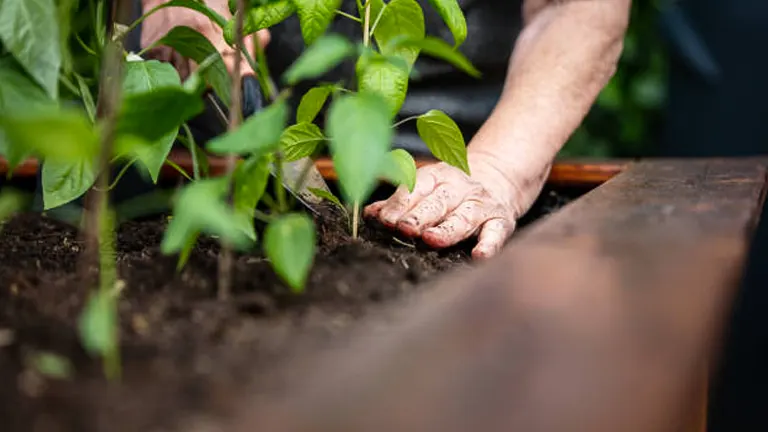
Raised garden beds elevate planting areas, improving soil conditions and access for gardeners. They consist of contained soil areas raised above ground level, often framed by materials like wood or stone. This gardening method enhances soil drainage, reduces weed competition, and can extend the growing season by warming soil faster in spring. It also minimizes soil compaction, as there’s no need to walk on the beds, and allows for targeted soil amendment, catering to specific plant needs. Raised beds are particularly beneficial for those with limited space or challenging ground conditions, offering an efficient and aesthetically pleasing way to cultivate a variety of plants.
Factors to Consider When Choosing Wood for Raised Garden Beds
Durability
Durability is paramount in selecting wood for raised garden beds. The longevity of wood affects not only the garden bed’s lifespan but also influences maintenance and replacement costs. Cedar and redwood are prized for their exceptional resistance to rot and pests, largely due to natural oils and tannins that protect them from decay.
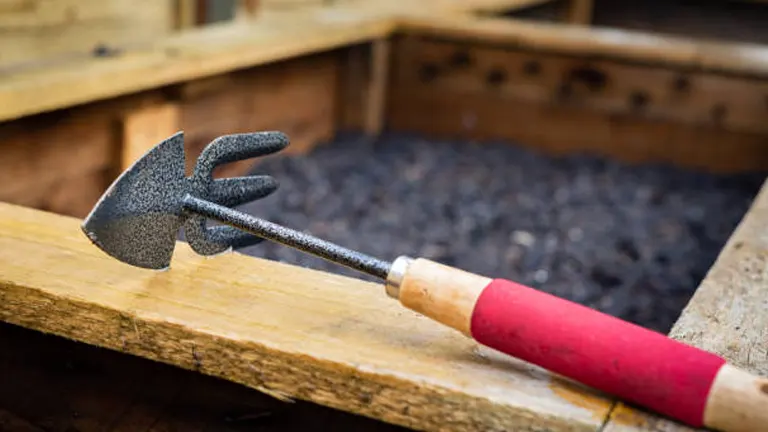
These woods can last up to a decade or more, making them a wise long-term investment for gardeners. Conversely, less durable woods like pine, while more affordable, may succumb to deterioration within five to six years, necessitating more frequent replacements or treatments to extend their life.
Cost
The price of wood varies significantly across different types. Premium woods like cedar and redwood offer durability and aesthetic appeal but come with a higher cost. For gardeners on a budget, alternatives like pine or pressure-treated wood present a more economical choice.
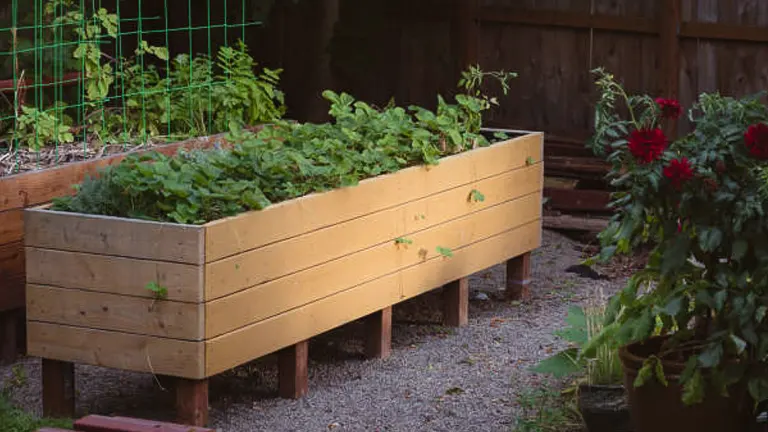
However, it’s crucial to consider the long-term implications of this initial cost saving. Cheaper woods may require more frequent replacement or maintenance, potentially increasing the overall cost over time. Gardeners need to find a balance between upfront costs and the expected lifespan and upkeep of the wood.
Sustainability
With a growing emphasis on environmental stewardship, the sustainability of wood sources is a key consideration. Opting for wood from sustainably managed forests minimizes ecological impact and supports responsible forestry practices.
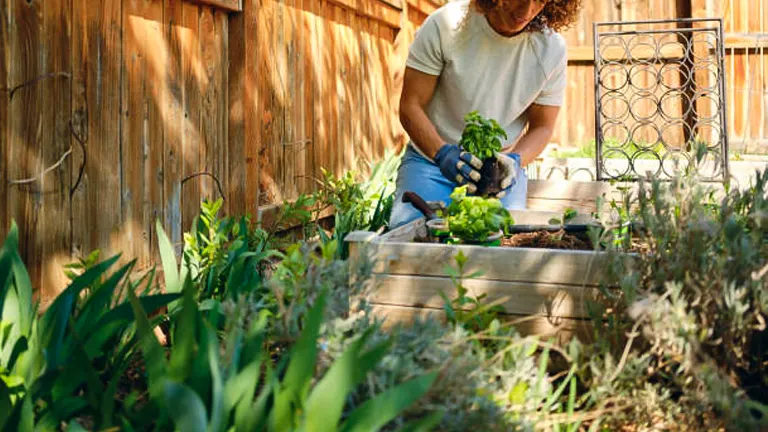
Look for certifications like the Forest Stewardship Council (FSC) to ensure the wood is sourced in an eco-friendly manner. Additionally, consider the carbon footprint associated with transporting the wood; locally sourced materials often have a lower environmental impact compared to those shipped from distant locations.
Treatment and Safety
The treatment processes wood undergoes can impact both its durability and safety. For instance, pressure-treated wood is treated with chemicals to enhance its resistance to decay and pests, making it a durable choice.
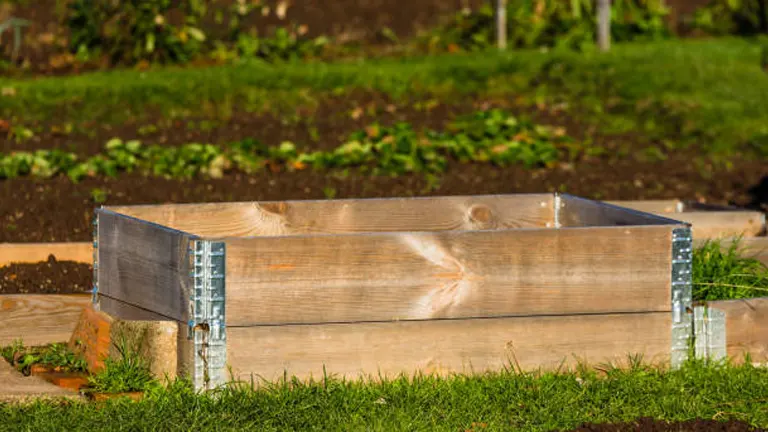
However, older pressure-treated wood may contain harmful chemicals like arsenic, which can leach into the soil. It’s vital to ensure that any treated wood used for garden beds is safe for growing edible plants.
Workability and Installation
The ease of working with and installing different types of wood is an important practical consideration. Softer woods like pine are easier to cut and assemble, making them a good choice for DIY enthusiasts or novice gardeners.
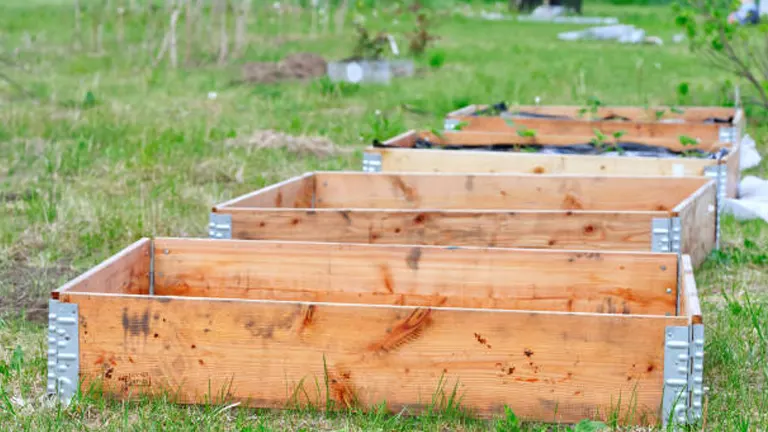
Harder woods like cedar and redwood, while more challenging to work with, offer greater stability and strength. The choice of wood should align with the gardener’s carpentry skills and the tools available.
Aesthetic Preferences
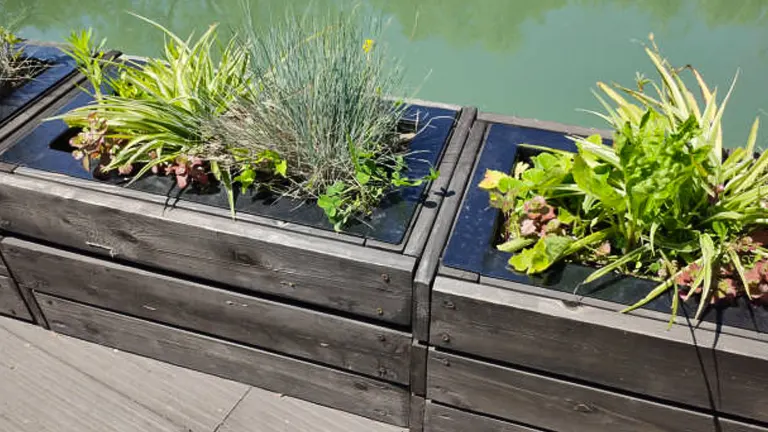
The look of the wood can influence the overall appearance of the garden. Woods like cedar and redwood have a natural beauty and can enhance the aesthetic appeal of the garden space. They age gracefully, developing a silver-gray patina over time. On the other hand, woods like pressure-treated pine may lack the natural look but can be painted or stained to match personal preferences.
Regional Availability
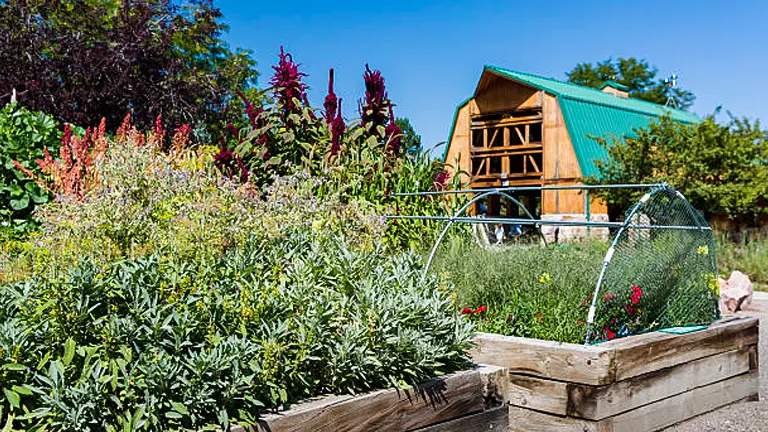
The availability of wood types can vary by region, influencing both cost and sustainability. For example, cedar is more readily available in the eastern United States, potentially making it a more affordable and sustainable choice in that region. Similarly, redwood may be more accessible on the West Coast. Gardeners should consider what is locally available to reduce transportation costs and environmental impact.
Types of Wood for Raised Garden Beds
1. Cedar Wood
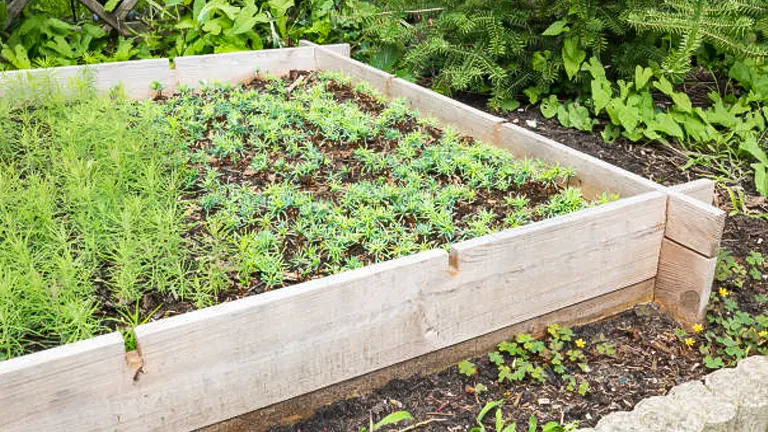
Characteristics: Cedar, particularly Western Red Cedar, is renowned for its longevity and natural resistance to rot, decay, and insects. It contains natural oils and tannins, which act as preservatives and give it a distinct aromatic quality. Cedar’s fine grain and uniform texture make it aesthetically appealing and easy to work with.
Pros:
- Naturally, rot and insect resistant
- Aesthetically pleasing with a unique reddish-brown hue
- Does not require chemical treatments
- Offers a pleasant, natural aroma
Cons:
- More expensive compared to other woods
- Availability can be limited based on region
Best Uses: Ideal for permanent, decorative garden beds where aesthetics and minimal maintenance are key. Particularly suited for organic gardening due to its natural properties.
2. Redwood
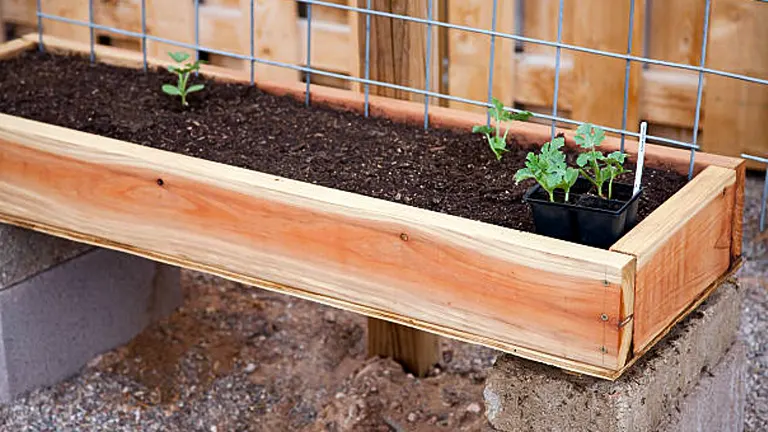
Characteristics: Redwood stands out for its superior durability, natural resistance to decay, and pests, making it a robust choice for garden beds. It retains its shape exceptionally well, resisting warping and shrinking, a significant advantage for long-term outdoor use. The distinctive deep red hue and natural sheen of redwood not only add to its visual appeal but also contribute to the aesthetic value of any garden setting.
Pros:
- Exceptionally resistant to decay and insects, ensuring longevity.
- Maintains structural integrity with minimal warping or shrinking.
- Striking natural reddish hue enhances visual appeal.
- Known for a longer lifespan compared to many other woods.
Cons:
- Tends to be more expensive, which might not fit all budgets.
- Availability can be limited depending on the geographical region.
Best Uses: Redwood is ideal for creating durable, visually appealing garden beds, especially suited for permanent installations in residential landscapes. Its natural beauty and longevity make it a preferred choice in regions where it is readily available.
3. Douglas Fir
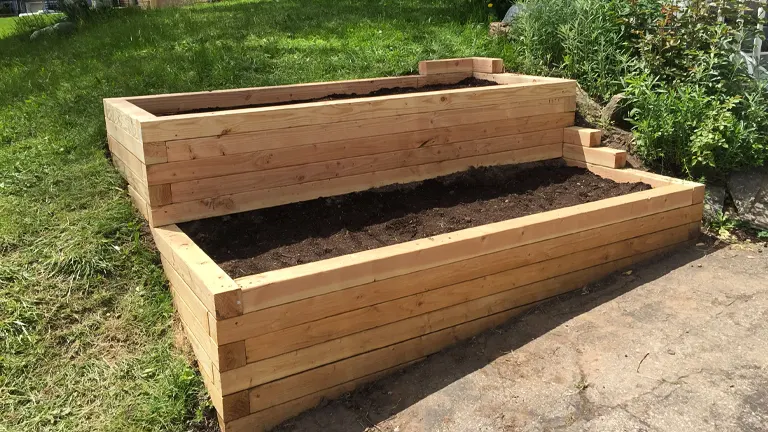
Characteristics: Douglas Fir offers a practical balance between durability and affordability. It’s not as resistant to decay as cedar or redwood, but it outperforms pine in this aspect. With its light brown color and straight grain, Douglas Fir presents an appealing appearance and is relatively easy to handle and work with, making it a versatile choice for various garden projects.
Pros:
- More affordable than cedar and redwood, making it accessible for a wider range of budgets.
- Reasonably durable, providing a good compromise between longevity and cost.
- Commonly available, ensuring easy sourcing for gardeners in many areas.
Cons:
- Shorter lifespan than premium woods like cedar and redwood
- Requires more maintenance to prevent rot
Best Uses: Douglas Fir is an excellent choice for gardeners seeking a balance between cost and durability. It’s well-suited for both ornamental and functional garden beds where longevity is desired, but the higher cost of premium woods is a concern. This wood is particularly useful for larger projects or where multiple beds are needed, offering a cost-effective solution without significantly compromising quality.
4. Pine
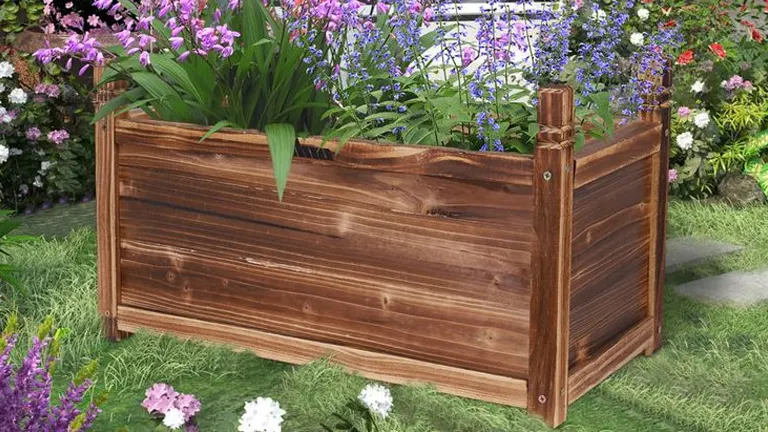
Characteristics: Pine is recognized for its affordability and ease of availability, making it a popular choice for many gardeners. Its softness makes it easy to cut and assemble, which is particularly advantageous for DIY projects. However, this same softness means pine is less resistant to wear, tear, and environmental elements. It’s more susceptible to rot and pest infestation compared to more durable woods like cedar or redwood.
Pros:
- Highly cost-effective, making it a budget-friendly option.
- Widely available and can be found in most hardware stores.
- Easy to work with, ideal for DIY projects and novice builders.
Cons:
- Tends to have a much shorter lifespan, often only lasting a few years.
- More prone to issues like rot and pest infestation, requiring more frequent replacement or treatment.
Best Uses: Pine is an excellent choice for temporary or beginner garden projects, especially in scenarios where long-term durability isn’t a primary concern. It’s also suitable for situations where frequent wood replacement is feasible and cost-effective, such as in rental properties or for seasonal garden beds. Pine’s ease of use makes it an ideal choice for those new to woodworking or raised bed gardening.
5. Pressure-treated Wood
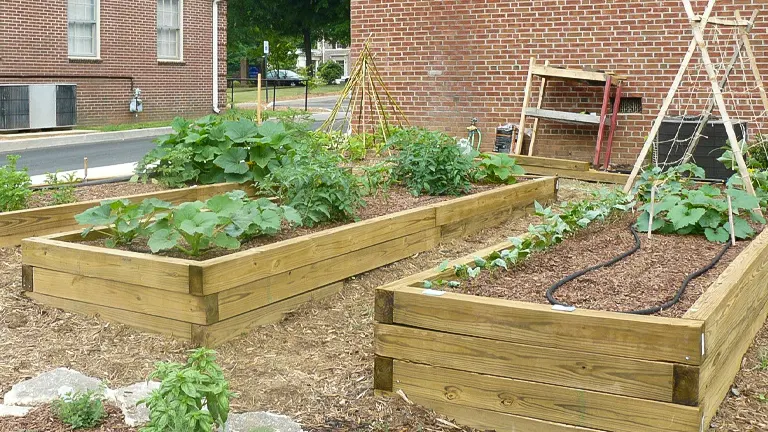
Characteristics: Pressure-treated wood is designed for longevity and resilience, treated with chemicals to fend off decay, rot, and pests. This treatment makes it a sturdy option for garden beds, particularly in harsh outdoor conditions. Modern pressure-treated wood is generally safer compared to older versions, but concerns remain, especially for organic gardening, due to the chemicals used in the treatment process.
Pros:
- Enhanced durability, resistant to rot and pests, making it suitable for long-term outdoor use.
- More affordable compared to some untreated wood options.
- Readily available in various dimensions and types, adding to its versatility for different garden projects.
Cons:
- The presence of chemical preservatives can be a drawback for those pursuing organic gardening practices.
- Potential environmental and health concerns due to the chemicals, which might be a consideration for garden beds intended for edible plants.
Best Uses: Pressure-treated wood is a practical choice for garden beds where durability is a key concern, especially in gardens focusing on non-edible plants. It’s also well-suited for structural elements in garden landscaping where direct contact with soil and moisture is inevitable. This type of wood is ideal for gardeners looking for a long-lasting solution that balances cost and durability.
6. Composite Wood
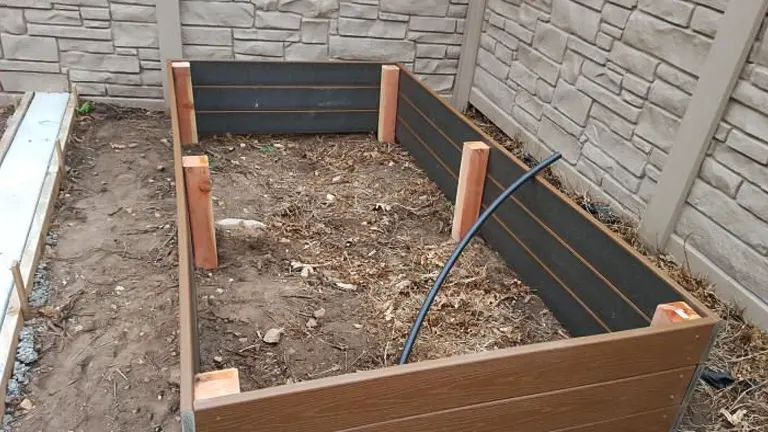
Characteristics: Composite wood is a modern alternative to traditional lumber, created from a combination of wood fibers and plastic resins. This innovative blend results in a material that exhibits exceptional durability and resistance to environmental stresses such as rot, decay, and pests. Composite wood is available in a variety of colors and textures, offering the aesthetic appeal of natural wood with enhanced performance characteristics.
Pros:
- Highly durable, offering an extended lifespan, often surpassing natural wood options.
- Low maintenance requirements, eliminating the need for frequent treatments or repairs.
- Resistant to rot, decay, and pests, making it ideal for outdoor use.
- Available in diverse styles and colors, allowing for customization in garden design.
Cons:
- Generally more expensive than traditional wood, which may be a consideration for budget-conscious gardeners.
- Lacks the authentic, organic feel and texture of natural wood, which might be important for those seeking a traditional garden aesthetic.
Best Uses: Ideal for long-lasting, low-maintenance garden beds, especially in modern or contemporary garden designs.
7. Oak
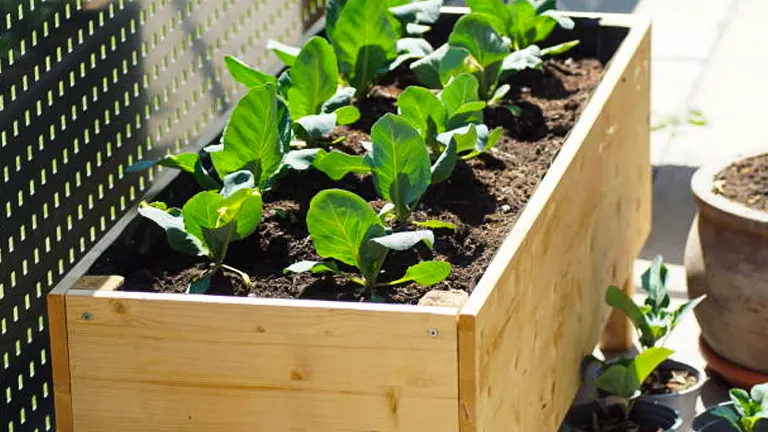
Characteristics: Oak is a hardwood known for its exceptional strength and durability, making it an excellent choice for more permanent structures. It has a notable resistance to decay and pests, largely due to its dense nature. Oak’s prominent grain contributes to its distinct, robust appearance, offering a classic aesthetic that can enhance the look of any garden.
Pros:
- Highly durable, capable of withstanding harsh outdoor conditions over many years.
- Resistant to decay and pest infestations, reducing the need for chemical treatments.
- Offers a classic and timeless visual appeal, complementing various garden designs.
Cons:
- Its heavy nature can make it more challenging to work with, requiring more effort in cutting and assembly.
- Typically more expensive than softer wood options, potentially impacting budget considerations.
Best Uses: Oak is ideally suited for creating permanent, sturdy garden beds where durability and a traditional aesthetic are key considerations. Its natural longevity makes it perfect for gardeners looking for a one-time investment in their garden infrastructure. Oak’s classic look and enduring nature also make it suitable for heritage or vintage-themed gardens.
Each type of wood has its unique attributes, making them suitable for different gardening needs and preferences. Your choice will depend on factors like budget, longevity, aesthetic preferences, and whether you’re growing edible plants.
Comparison of Different Woods
Rot Resistance
When comparing the rot resistance of different woods such as Cedar, Redwood, Douglas Fir, Pine, Pressure-Treated Wood, Composite Wood, and Oak, each has unique characteristics that affect their suitability for garden beds and other outdoor applications.
- Cedar Wood: Cedar, including varieties like Western Red Cedar, is highly rot-resistant due to its natural oils and tannins. It’s known for its long-lasting nature, often up to 10 years or more, without significant decay, especially in outdoor settings.
- Redwood: Redwood shares similar properties with Cedar in terms of rot resistance. Its natural tannins provide robust protection against rot and pests. Heart redwood is even more durable, potentially outlasting Cedar by a few years.
- Douglas Fir: Douglas Fir offers moderate rot resistance. It is not as resilient as Cedar or Redwood but fares better than Pine. The heartwood is more resistant than the sapwood. Protective treatments can enhance its rot resistance, but it’s generally less durable compared to Cedar and Redwood.
- Pine: Pine is less resistant to rot and decay, primarily due to its softer nature. It has the shortest lifespan among these options and is prone to quicker degradation, especially in moist conditions.
- Pressure-Treated Wood: This wood type is treated with chemicals to enhance its rot resistance. It’s quite effective against rot and pests and can last up to 40 years. However, the chemicals used may raise concerns, especially for organic gardening.
- Composite Wood: Being a blend of wood fibers and plastic resins, composite wood is highly resistant to rot and decay. It doesn’t suffer from the typical vulnerabilities of natural woods, making it a very durable option, albeit at a higher cost.
- Oak: Oak, particularly varieties like White Oak, is known for good rot resistance. It’s dense and strong, offering substantial protection against decay and pests. However, it can be more challenging to work with due to its hardness.
Each of these woods has its advantages and disadvantages in terms of rot resistance, cost, workability, and environmental impact. Your choice will depend on the specific requirements of your project, budget considerations, and personal preferences regarding aesthetics and sustainability.
Durability
When comparing the durability of different woods such as Cedar, Redwood, Douglas Fir, Pine, Pressure-Treated Wood, Composite Wood, and Oak, it’s important to consider how these materials withstand environmental factors, wear, and overall longevity. Here’s an educational comparison:
- Cedar Wood: Cedar, particularly Western Red Cedar, is renowned for its durability. It naturally resists rot, decay, and insect infestation. Cedar’s natural oils contribute to its longevity, making it a popular choice for outdoor projects where long-term durability is desired. Typically, cedar can last 15-30 years in outdoor conditions.
- Redwood: Redwood is comparable to Cedar in terms of durability, with a slight edge due to its denser structure. Like Cedar, it also has natural oils and tannins that make it resistant to decay and pests. Redwood structures can last up to 30 years or more, especially when properly maintained.
- Douglas Fir: Douglas Fir offers moderate durability. It’s less resistant to rot and decay compared to Cedar and Redwood but is more durable than Pine. Its lifespan is usually around 10-15 years, but with proper treatment and maintenance, it can last longer.
- Pine: Pine is less durable than the other woods listed here. It’s prone to rot and insect damage if not properly treated. Typically, untreated pine can last around 5-10 years in outdoor conditions, depending on the environmental exposure.
- Pressure-Treated Wood: This wood is treated with chemicals to enhance its durability, making it resistant to rot and pests. It’s a strong option for outdoor use and can last up to 40 years. However, the chemicals used for treatment can be a concern for some applications, especially where food is involved.
- Composite Wood: Made from a combination of wood fibers and plastic, composite wood is highly durable and resistant to environmental factors. It doesn’t rot or decay like natural wood and is generally maintenance-free. Composite materials can last over 25-30 years without significant deterioration.
- Oak: Oak, particularly White Oak, is known for its strength and durability. It has good resistance to rot and decay, making it a solid choice for outdoor use. Oak structures can last several decades, especially when properly treated and maintained.
| Wood Type | Durability | Rot Resistance | Lifespan (Years) | Maintenance | Suitability for Outdoor Use |
|---|---|---|---|---|---|
| Cedar Wood | High | Excellent | 15-30 | Low | Very Good |
| Redwood | Very High | Excellent | Up to 30+ | Low | Excellent |
| Douglas Fir | Moderate | Moderate | 10-15 | Moderate | Good |
| Pine | Low | Low | 5-10 | High | Fair |
| Pressure-Treated Wood | Very High | Excellent | Up to 40 | Low | Very Good |
| Composite Wood | Very High | Excellent | 25-30+ | Very Low | Excellent |
| Oak | High | Good | Several Decades | Moderate | Good |
This table provides a quick overview of the durability characteristics of each wood type. Cedar and Redwood are excellent for longevity and low maintenance, while Pressure-Treated and Composite woods offer robust durability with different environmental considerations. Oak is known for its strength and moderate maintenance, whereas Douglas Fir and Pine are more budget-friendly options with varying degrees of durability and maintenance requirements.
Cost-Effectiveness
When evaluating the cost-effectiveness of different woods like Cedar, Redwood, Douglas Fir, Pine, Pressure-Treated Wood, Composite Wood, and Oak, it’s essential to consider not just the initial purchase price but also factors such as longevity, maintenance requirements, and suitability for the intended use. Here’s a comparative analysis:
- Cedar Wood: Cedar is generally more expensive than some other woods but offers excellent longevity and low maintenance. Its cost-effectiveness is high when considering its durability and minimal upkeep needs.
- Redwood: Similar to Cedar in cost, Redwood is on the higher end price-wise. However, its exceptional durability and low maintenance requirements can make it a cost-effective choice over the long term.
- Douglas Fir: This is a more affordable option compared to Cedar and Redwood. While it offers decent durability, it may require more maintenance, slightly reducing its overall cost-effectiveness.
- Pine: Pine is the most affordable option upfront. However, its shorter lifespan and higher maintenance requirements might increase the long-term costs, making it less cost-effective for permanent structures.
- Pressure-Treated Wood: This type of wood is more affordable than Cedar and Redwood and offers enhanced durability due to chemical treatments. Its longevity makes it a cost-effective option for many outdoor applications.
- Composite Wood: Composite wood is typically more expensive initially but offers high durability and minimal maintenance. These factors contribute to its cost-effectiveness, especially over a long period.
- Oak: Oak can be expensive but is known for its strength and durability. Its long lifespan can make it a cost-effective choice for permanent, high-end structures.
| Wood Type | Initial Cost | Longevity | Overall Cost-Effectiveness |
|---|---|---|---|
| Cedar Wood | High | Long | High |
| Redwood | High | Very Long | High |
| Douglas Fir | Moderate | Moderate | Moderate |
| Pine | Low | Short | Low |
| Pressure-Treated Wood | Moderate | Long | High |
| Composite Wood | High | Very Long | High |
| Oak | High | Very Long | Moderate-High |
Summary: Cedar, Redwood, and Composite Wood, though initially more expensive, offer high cost-effectiveness due to their longevity and low maintenance. Pressure-Treated Wood, while moderately priced, also ranks high in cost-effectiveness due to its durability. Oak, with its high strength, offers good value over time despite a higher initial cost. Douglas Fir and Pine are more affordable initially but may not be as cost-effective in the long run due to shorter lifespans and higher maintenance needs.
Sustainability
When considering the sustainability of different woods such as Cedar, Redwood, Douglas Fir, Pine, Pressure-Treated Wood, Composite Wood, and Oak, several factors come into play, including the management of the source forests, manufacturing processes, and the end-of-life prospects of the wood.
- Cedar Wood: Cedar is highly sustainable due to its abundant and well-managed growth in North America. It sequesters significant carbon during its long lifespan and has a low carbon footprint in manufacturing due to its natural stability and minimal need for kiln drying.
- Redwood: Redwood trees grow fast and sequester considerable amounts of carbon. They have the ability to regrow from sprouts, aiding in replenishing timber sources. Redwood’s manufacturing process has a relatively low carbon footprint, and the wood can be recycled or used for biomass energy at the end of its life.
- Douglas Fir: Douglas Fir is a sustainable choice, particularly due to its fast growth rate and widespread distribution. However, concerns arise from habitat disruption and illegal logging in its native ranges. Manufacturing Douglas Fir has a relatively low carbon footprint, especially when using biomass for kiln drying.
- Pine: Pine is generally sustainable, especially when grown in mixed forests. However, single-species pine plantations can lead to biodiversity loss and significant carbon emissions when replacing natural forests. Pine manufacturing is relatively eco-friendly, often using renewable energy sources for kiln drying.
- Pressure-Treated Wood: Commonly made from softwoods like pine, pressure-treated wood’s sustainability is a bit complex. While it uses fast-growing species, the chemical treatment process and the difficulty in recycling treated wood reduce its overall sustainability.
- Composite Wood: Composite wood is initially eco-friendly due to its durability and low maintenance, reducing the need for replacements. However, its end-of-life options are limited as it cannot be recycled or reused like natural wood.
- Oak: Oak’s sustainability is not explicitly addressed in the sources, but generally, hardwoods like oak have a longer growth cycle, which can impact their sustainability compared to faster-growing species.
Maintenance Requirements
- Cedar Wood: Cedar is known for its natural resistance to rot, decay, and insects, thanks to its inherent oils and phenols. This makes cedar relatively low-maintenance, requiring only regular cleaning and occasional sealing to preserve its color and protective qualities. It does not require frequent staining or chemical treatments.
- Redwood: Similar to cedar, redwood boasts natural resistance to environmental threats and maintains its structural integrity with minimal maintenance. Regular cleaning and periodic application of a finish to protect against moisture and UV rays are usually sufficient. Redwood’s stability means it’s less prone to warping, ensuring longevity with basic care.
- Douglas Fir: Douglas fir, while offering some weather resistance, especially when pressure-treated, tends to have a shorter lifespan outdoors than cedar or redwood unless meticulously maintained. Maintenance for Douglas fir typically involves regular staining or painting and sealing to protect against moisture and pests.
- Pine: Pine requires more maintenance due to its susceptibility to rot and insect damage. Pressure-treated pine has enhanced durability but still needs periodic sealing and staining to maintain its condition and appearance. Regular inspections for signs of wear or damage are also recommended.
- Pressure-Treated Wood: This wood type is infused with chemical preservatives to resist rot, decay, and insect infestation, making it highly durable. However, it requires maintenance to combat the potential for warping and cracking. Annual cleaning and application of a water-repellent finish are recommended to preserve its condition.
- Composite Wood: Composite materials are highly durable and require the least maintenance, needing only occasional cleaning to maintain their appearance. They do not require staining, sealing, or painting, making them an attractive low-maintenance option.
- Oak: While not specifically mentioned in the provided sources, oak is generally durable and requires maintenance similar to other hardwoods. It benefits from periodic cleaning and application of a protective finish to guard against moisture and UV damage.
Which Wood Comes Out on Top?
it appears that Cedar and Redwood consistently stand out for their combination of durability, sustainability, aesthetic appeal, and relatively low maintenance requirements. These characteristics make them particularly suitable for gardeners who prioritize long-term investment in their garden’s health and appearance, alongside a commitment to environmental sustainability. While cost may initially be higher for these options, their extended lifespan and minimal upkeep needs potentially offer greater value over time. Thus, if a winner were to be declared in the quest for the ideal wood for raised garden beds, Cedar and Redwood would jointly take the prize, offering a balanced blend of practical benefits and ecological responsibility.
Related Post
- Backyard Vegetable Garden Layout Plans
- Best Soil for a Vegetable Garden in a Raised Bed
- Raised Bed Vegetable Gardening: A Beginner’s Guide
Conclusion
Choosing the right wood for raised garden beds is crucial for both longevity and environmental impact. Cedar and Redwood rise to the top as ideal choices due to their durability, natural resistance to pests and rot, and sustainability factors. While the initial investment might be higher, their extended lifespan and low maintenance make them a wise choice for gardeners committed to sustainability and quality.
FAQs
- Can locally sourced wood be a better choice for raised beds in terms of sustainability?
Yes, using locally sourced wood reduces transportation emissions, supports local economies, and often means the wood is adapted to local conditions, enhancing its durability and sustainability. - How does the carbon footprint of composite wood compare to natural wood for garden beds?
Composite wood often has a lower carbon footprint over its lifecycle, as it’s made from recycled materials and requires less maintenance. However, natural woods like cedar can sequester carbon, making them environmentally beneficial if sourced sustainably. - What are the long-term cost implications of choosing cheaper woods like pine for garden beds?
Initially, cheaper woods like pine may seem cost-effective, but their shorter lifespan and higher maintenance requirements can lead to greater long-term costs due to replacement and upkeep compared to more durable options like cedar or redwood. - Can the treatment chemicals in pressure-treated wood affect soil health and plant growth?
Modern pressure-treated woods use safer chemicals than in the past, but it’s still essential to ensure the specific treatment is safe for garden use and won’t leach harmful substances into the soil that could affect plant health. - How does wood treatment affect the recyclability of pressure-treated and composite woods at the end of their life?
The chemicals in pressure-treated wood can complicate recycling or disposal, whereas composite wood, despite being made from recycled materials, often cannot be recycled again, limiting end-of-life options. - What are innovative alternatives to traditional wood choices for raised garden beds?
Innovations include using recycled plastic lumber, which offers durability and moisture resistance without the environmental impact of cutting down trees, or exploring new materials like bamboo, which is highly renewable and durable. - How do wood choices for raised beds impact biodiversity and habitat preservation?
Selecting woods from sustainably managed forests, such as FSC-certified cedar or redwood, helps ensure that your garden bed materials do not contribute to deforestation or habitat loss, supporting biodiversity. - What role does wood density play in the durability and maintenance needs of garden bed materials?
Higher-density woods like oak or redwood are more resistant to wear and decay, requiring less maintenance over time compared to softer, less dense woods like pine, which may rot or degrade faster when exposed to elements.
As we wrap up our exploration of selecting the ideal wood for raised garden beds, it’s clear that thoughtful consideration of durability, cost, and sustainability guides us to make informed choices. Whether you lean towards the natural beauty and resilience of Cedar and Redwood or explore other alternatives, the key lies in aligning your selection with both your gardening aspirations and environmental values. Happy gardening!

Benjamin Brooks
Forestry AuthorGreetings! I'm Benjamin Brooks, and my journey over the past 15 years has revolved around the fascinating realms of content creation, expertise in snow clearing, and the intricate world of lumberjacking and landscaping. What began as a simple curiosity about the natural world and heavy machinery has evolved into a passionate profession where my love for crafting words intertwines seamlessly with my lumberjacking and garden skills.





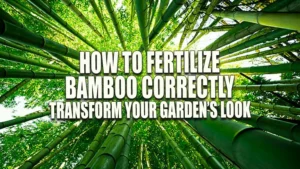


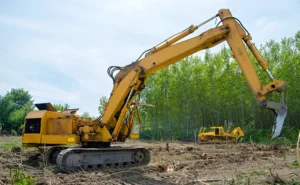




Leave your comment